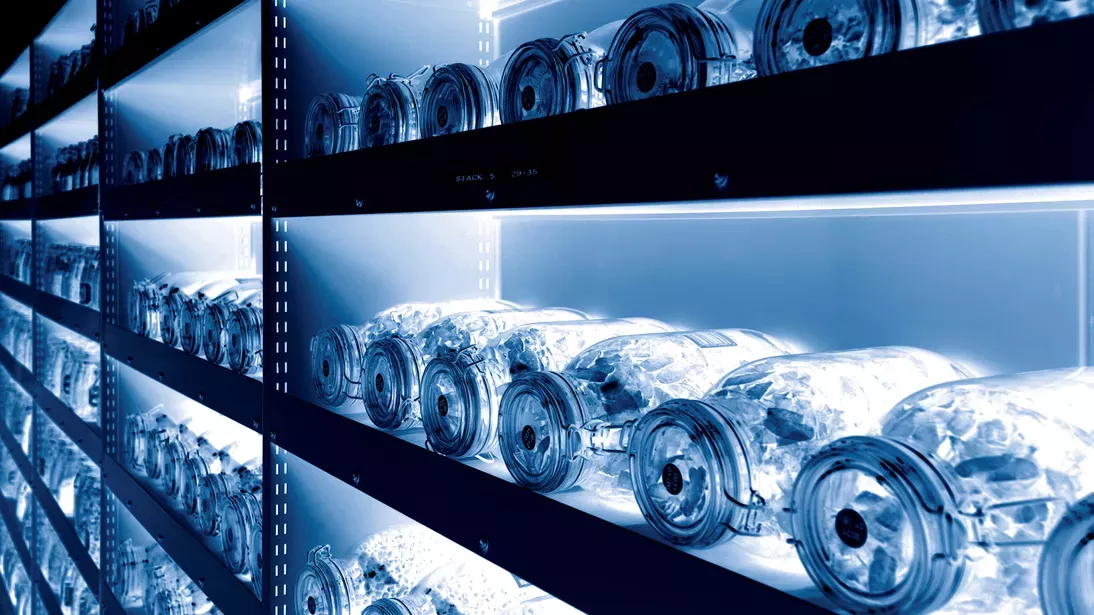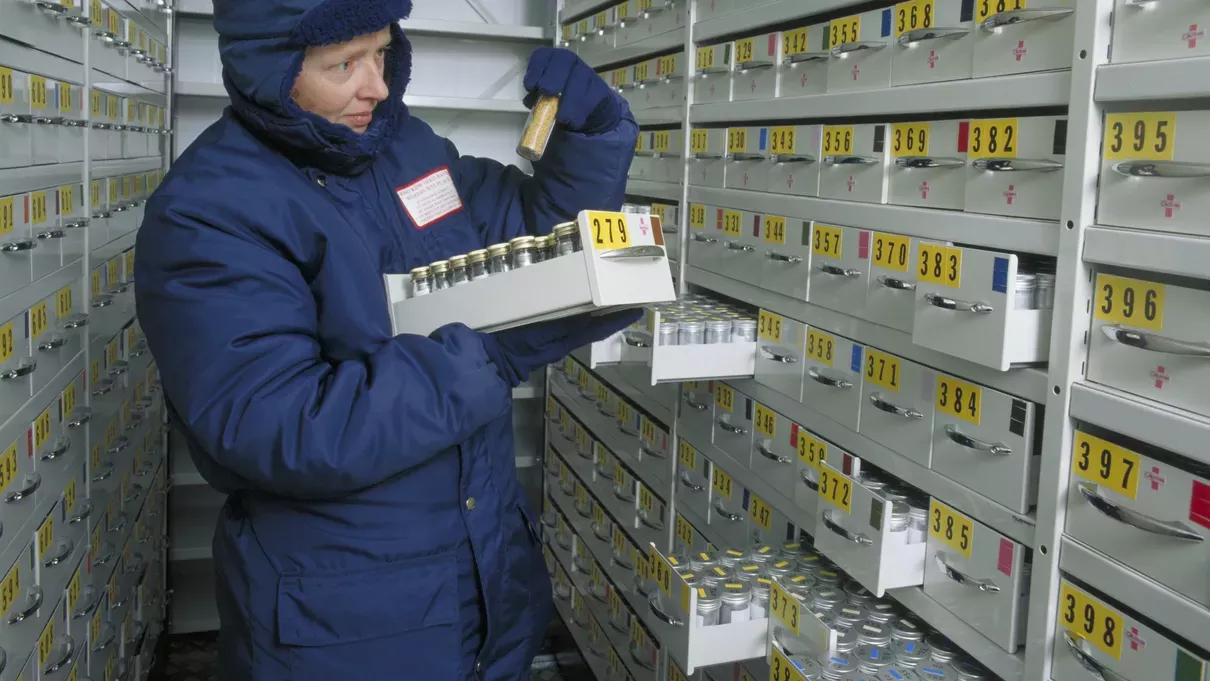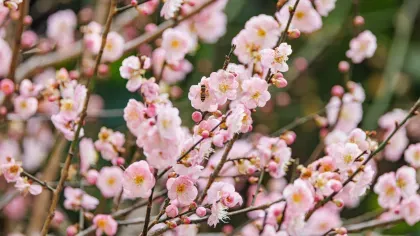28 September 2018
The world’s richest bank: how we store the world’s seeds
We go down into Wakehurst’s underground vaults, which lay at the heart of our work to protect plants around the world – the Millennium Seed Bank.

What is the Millennium Seed Bank?
All life on Earth depends on plants, and more than 80,000 species could be faced with extinction.
The Millennium Seed Bank (MSB) is part of the fight to protect them.
A storage and research site, it is focused on the conservation of seed from wild plant species, most of which have been purposefully collected thanks to collaborations between Kew scientists and international partners around the world.
Banking the world’s seeds gives us an insurance policy against the extinction of plants in the wild and protects our botanical heritage for future generations.
With over 2.25 billion seeds in storage from 189 countries, it is the largest conservation project of its kind.

Travelling underground
Seeds go on a journey from the moment they arrive at the MSB.
It begins when they’re delivered right to our front door, literally to our reception at Wakehurst!
Seeds arrive either wrapped in cloth or paper bags carefully labelled by our overseas partners.
After unpacking, seeds are taken to our initial drying room. The room is kept at 15oC with a 15% relative humidity – similar to an aircraft cabin.
The seeds are then stacked in crates with their country of origin marked on the side so we can identify them easily.
We dry them out because it preserves them that little bit longer. In fact, for every 1% that we reduce a seed’s moisture content, the life span of the seed doubles. Our initial drying phase increases seed longevity by 40 times, and seeds can stay in this room from anywhere between two weeks and six months.
Then its off to the cleaning laboratory and X-ray room, where the seeds are carefully cleaned to remove unnecessary bulk.
They’re X-rayed to highlight any insect damage or any empty seeds, which we can then discard as they’re not suitable for storage.
The main drying room is the next port of call - this room operates at 18oC, with a 15% relative humidity. Staff are only allowed to work in this area for a maximum of two hours so they don’t dehydrate.

Seeds can stay in here for up to a month to make sure they’re moisture free before they go on their final journey to the vaults located deep underground.
This is our treasure trove. All the seeds that we conserve and protect for the future are stored in these vaults.
They are flood, bomb, and radiation-proof rooms, and billions of seeds are kept frozen at –20°C.
For every five degrees centigrade that you cool dry seeds, the longevity of a seed doubles. So cooling seeds from 18oC in the dry room, to –20oC in the cold room, increases seed longevity by approximately 120 times.
We currently have six cold rooms. The overall vault is big enough to hold 33 London double-decker buses and could hold at least 30% of the world’s flora.
Each seed collection could hold the answer to some of the biggest human challenges of our time, like climate change, biodiversity loss or food security.
By 2020, our aim is to secure the safe storage of seeds from 25% of the world’s bankable plants. We are starting with the most at-risk plants and those with the most use for the future.
With the MSB, we are doing all we can to protect one of planet Earth’s most valuable kingdoms, seed by seed.


